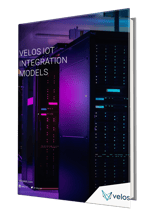

Top 10 IoT Security Risks and How to avoid them?
Adopting IoT technology can lead to improved performance, efficiency and valuable operational insights. However, it also introduces new security challenges.
With the rapid growth of the IoT industry, there is an increasing number of cyber threats and vulnerabilities that can be exploited maliciously. This is particularly true in the IoT sector, where the interconnectivity between IoT devices and networks creates a wide attack surface. A breach in one device or network segment can have a significant impact on the entire IoT network infrastructure.
To mitigate these risks, it is crucial to identify and understand the potential threats. In the following section, we will discuss the top 10 security risks. 
What are The top 10 IoT security risks
- Lack of standardization for IoT security: The absence of a uniform security standard in the IoT industry makes it challenging for developers and manufacturers to implement consistent security measures.
- Challenging device management: IT administrators face difficulties monitoring and updating IoT devices that remain in the field for extended periods, which can introduce new vulnerabilities.
- Inadequate data privacy: IoT devices often collect and transmit extensive user data. Insufficient privacy safeguards and mishandling this data can result in privacy breaches, exposing individuals’ personal information.
- Weak authentication and authorization: Many IoT devices have default or weak credentials that are rarely changed, making them vulnerable to unauthorized access.
- Vulnerable hardware: Most IoT devices are designed for low power consumption and have limited computational capacity. As a result, they often lack fundamental security features such as encryption and access control provisions.
- Easy physical access to devices: Attackers can physically access IoT devices to steal data, insert malware, or exploit their ports and internal circuits, leading to a breach of the organization's network.
- Use of insecure software components in IoT solutions: Manufacturers sometimes have to use older or unsafe components due to cost constraints, existing legacy systems, or a lack of updated services. These components may have known vulnerabilities and may not receive safety update patches from their creators.
- Insufficient Network segmentation: IoT devices often share networks with other devices or are exposed to unnecessary network services, such as open ports, which can allow an attack on one device to affect others.
- Misconfiguration and compatibility issues: Compatibility and interoperability issues between IoT devices and telecom networks can create various threats, ranging from compromised data to malware insertion into the IoT supply chain.
- IoT ransomware and botnet attacks: The large attack surface of the IoT makes it attractive for attackers to leverage botnets for reconnaissance, system disruption, or data exfiltration. Successful exfiltration can lead to ransom demands for data or system access.
How to Minimize IoT Security Risks:
Organizations can strengthen IoT security by adopting the following measures:
-
Certify devices using standards such as ISO 27001 for compliance and policy alignment.
-
Apply regular software updates to protect against evolving threats.
-
Encrypt data across all communication channels.
-
Segment networks and use VPNs to limit attacker entry points.
-
Monitor device lifecycles and replace outdated or insecure devices promptly.
-
Enhance physical security with tamper-resistant enclosures and remove identifying details.
-
Increase endpoint visibility to proactively detect risks and threats.
How Velos IoT Supports Secure IoT Deployments
Velos IoT provides robust global IoT connectivity across 700 networks in more than 200 countries and territories, supporting over 18 million connected devices.
Our connectivity is managed through a leading IoT connectivity management platform, with options such as Private APN gateways and flexible IoT integration models tailored to your needs.
👉Learn more about Velos IoT integration models.
Frequently Asked Questions (FAQs) About IoT Security
What is the biggest security risk in IoT?
The lack of standardized security measures is the biggest risk in IoT. Without consistent guidelines, devices may be shipped with weak authentication, outdated software, or poor encryption.
How can IoT devices be secured?
IoT devices can be secured by enforcing strong authentication, applying regular software updates, encrypting data, segmenting networks, and monitoring devices throughout their lifecycle.
Why is IoT vulnerable to cyberattacks?
IoT is vulnerable because of its large attack surface, weak default credentials, reliance on legacy software, and challenges in securing devices deployed long-term in the field.
What are common IoT attacks?
The most common attacks include botnets, ransomware, data breaches, malware insertion, and unauthorized access through weak authentication or misconfigured networks.
How can businesses minimize IoT risks?
Businesses can minimize risks by adopting industry certifications (e.g., ISO 27001), using private APNs, encrypting communications, hardening devices physically, and replacing outdated hardware.
Speak to a Velos IoT expert
Related articles


Top 3 Things to look for in IoT Solutions
For IoT solutions to be successful they need a complete ecosystem of components. Most noteworthy,...

Top IoT Use Cases in Retail with Real-Life Examples
The adoption of Internet of Things (IoT) technology has revolutionised the retail sector, ushering...

